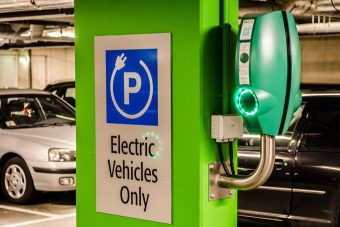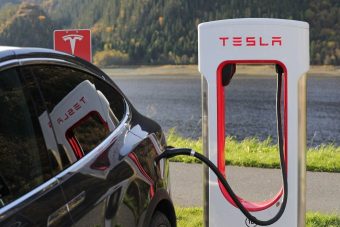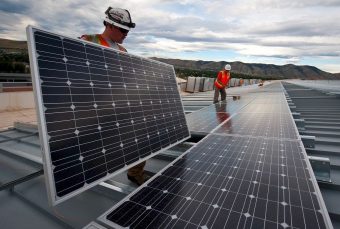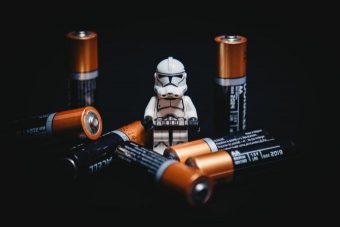In 2017, clean power gathered unprecedented momentum. Multiple automakers launched entire families of electric vehicles (EVs), including the most exciting one yet, Tesla’s Model 3. With climate change problems mounting, national and local governments are pushing for more renewable energy and an end to fossil-fueled cars — despite hostile moves in those areas by US President Donald Trump. Elected officials and the public want fewer gas-powered vehicles and coal plants, and more EVs, solar panels, and wind turbines. That will ultimately benefit your health, wallet, and environment, and you’ll be less reliant on large energy and oil corporations, to boot.

With the expectations of consumers, companies and governments all getting higher, 2018 has a lot to deliver. There are key deadlines, especially on Tesla’s part, and if companies miss them, green buyers could go from exuberant to depressed. Here’s what to expect on the consumer side for EVs, clean home power, battery storage backup, and more.
Despite increasing concern that atmospheric CO2 levels are reaching the point of no return, president Trump opted America out of the Paris climate agreement, and along with many Republicans in control of American Congress has pushed coal and oil instead of clean energy. The rest of the world, however, is moving forward. France, for one, created the “Make our Planet Great Again” initiative as counter-programming to Trump. That nation and the UK will also ban fossil-fueled cars completely by 2040. Elsewhere, China installed a record number of wind and solar energy projects in 2017 to curb its own smog issues, and has even bigger plans for 2018 and beyond. The nation wants 20 percent of its power to come from solar or wind by 2030, and to invest around $560 billion by 2020, creating 13 million jobs in the process. As China is now the world’s biggest polluter, this will not only mitigate global CO2 levels but make green tech cheaper around the world.
Electric, hydrogen and hybrid vehicles

In 2018, you’ll have more choice than ever for green transportation as plug-in-hybrid choices expand and EVs become ever more mainstream. Whereas before Tesla was the only game in town for long-range electric transport, you can now choose a Chevy Bolt, Nissan Leaf or, if you’re in Europe, a Renault Zoe. Next year there will be even more choices as cars like the VW e-Golf and the Jaguar i-Pace arrive.
Tesla started delivering the Model 3 in July 2017 to the nearly 400,000 people who ordered one. At that time, Elon Musk promised to build around 1,500 in September, 20,000 this month, and up to 10,000 a week later in 2018. Suffice to say, that didn’t happen — not even close. By the beginning of October, the company had produced 260 cars only, reportedly because of Gigafactory battery production issues and other problems. Things have picked up since, with large numbers of Model 3s reportedly spotted at delivery centers. On top of that, suppliers recently reported that Tesla has increased its demand for parts for up to 5,000 vehicles per week. If Tesla holds to that, it will just be a month or two behind its original schedule. Still, last quarter it produced a record 25,336 vehicles over three months (mostly Model S and Model X EVs), so 20,000 Model 3s in a single month would be a big leap.
Lucky for us, other manufacturers will be selling other new or updated EVs next year, including Chevy, Nissan, Jaguar, and Audi.
Solar power

Tesla is also one of the most interesting consumer solar power companies for 2017. It launched its Solar Roof in late 2016, providing an option for homeowners who want solar-powered homes but not ugly solar panels. If you’re building a new home or replacing your roof anyway, the solar tiles compare favorably with pricey roofing options like slate or cedar shingles. Customer deliveries only recently started (delays with Tesla are obviously a thing), but by next year the company should be building enough to fulfill all of its orders.
Panasonic has reportedly also started building its high-efficiency, low-profile solar panels for Tesla at the Gigafactory 2, in Buffalo. Those will sell in limited numbers next year, but reportedly won’t reach peak capacity until 2019.
In a new wrinkle on the sharing economy, so-called blockchain microgrids could bring solar power to the masses. A company called LO3 Energy promises to let communities buy and sell solar power generated locally. The system works on any size solar installation, from hundreds of homes to just two. If solar power could be shared among multiple homes or businesses, it would become a lot more affordable.
Sunpower is another company to watch. It launched a new type of panel that uses a technique called “shingling” to fit more photovoltaic cells into the same space. That could result in cheaper solar panel installations for both consumers and energy companies.
Batteries, hydrogen and infrastructure

Lithium-ion battery systems are having a good year outside of EVs, famously helping Australia and Hawaii save sun and wind energy for rainy (or calm) days. Tesla again gets the lion’s share of publicity for its Powerpack installations, which helped it win a $50 million bet with the South Australian government.
We also have to give a nod to Ikea, though, which has been selling inexpensive solar panels in the UK and other nations. It unveiled its own battery system in Britain (manufactured, again, by Panasonic). For £6,925 ($9,300), you can get a package with both solar panels and the battery, including installation.
There are still a few developments that could arrive to market as early as next year. The most promising is perhaps StoreDot’s batteries, which can be charged in as little as five minutes for both EVs and smartphones. The company has been vague about how it works, saying the tech uses nano-materials and organic compounds. If batteries like those used by Tesla and Chevy could be charged in five minutes rather than an hour, it would obviously make EVs a lot more practical for long trips.
More realistically, Samsung was among the first of the big manufacturers to launch a faster-charging lithium-ion battery, the 21700 cell, at the beginning of the year. It can be fully charged in just 20 minutes, a significant improvement over the 30-minute-plus charging times of current cells. The only problem: While they’re already available for e-bikes and other smaller devices, Samsung reportedly won’t mass-produce them for cars until about 2021.
As for whether you’ll drive a hydrogen car in 2018, the answer is “not likely.” The cars are still far too expensive ($60,000 or so for the Toyota Mirai), and there are almost no filling stations in North America. Hydrogen needs economies of scale to kick in, and with EVs coming on strong, that seems increasingly unlikely.
Speaking of infrastructure, with more companies launching EVs, you’ll need more places to charge them besides your home. In Europe, the Ionity network will be launching more than 400 stations by 2020, including eighty 350kW ultra-fast chargers that can juice up future EVs in as little as five to 10 minutes.
In the US, there are now around 16,000 charging stations, with 13 percent of those offering fast charging.
Conclusion
If 2018 fulfills the potential of 2017, green energy will become an unstoppable force. Any moves the Trump administration decides to make against it will only hurt the US in the short term, as green tech becomes an economic force around the world. EVs next year could be cheaper than gasoline cars for the first time, considering overall cost of ownership. Suffice to say that replacing a million gas-burning cars will have a big impact on atmospheric CO2 levels.
Even without big breakthroughs, battery tech keeps evolving and is bound to give us more capacity and faster charging times in 2018. Small tech and engineering gains will also make solar panels a bit better and a bit cheaper.
By 2019 and 2020, EVs with self-driving tech will be cheap, practical and mainstream. With solar and wind starting to beat coal, nuclear and gas-powered plants in price, the power you use for your EV and home will be cleaner and cleaner. Will this save the planet from excess CO2 levels? Maybe not, but we have no choice but to try.
Source: engadget





